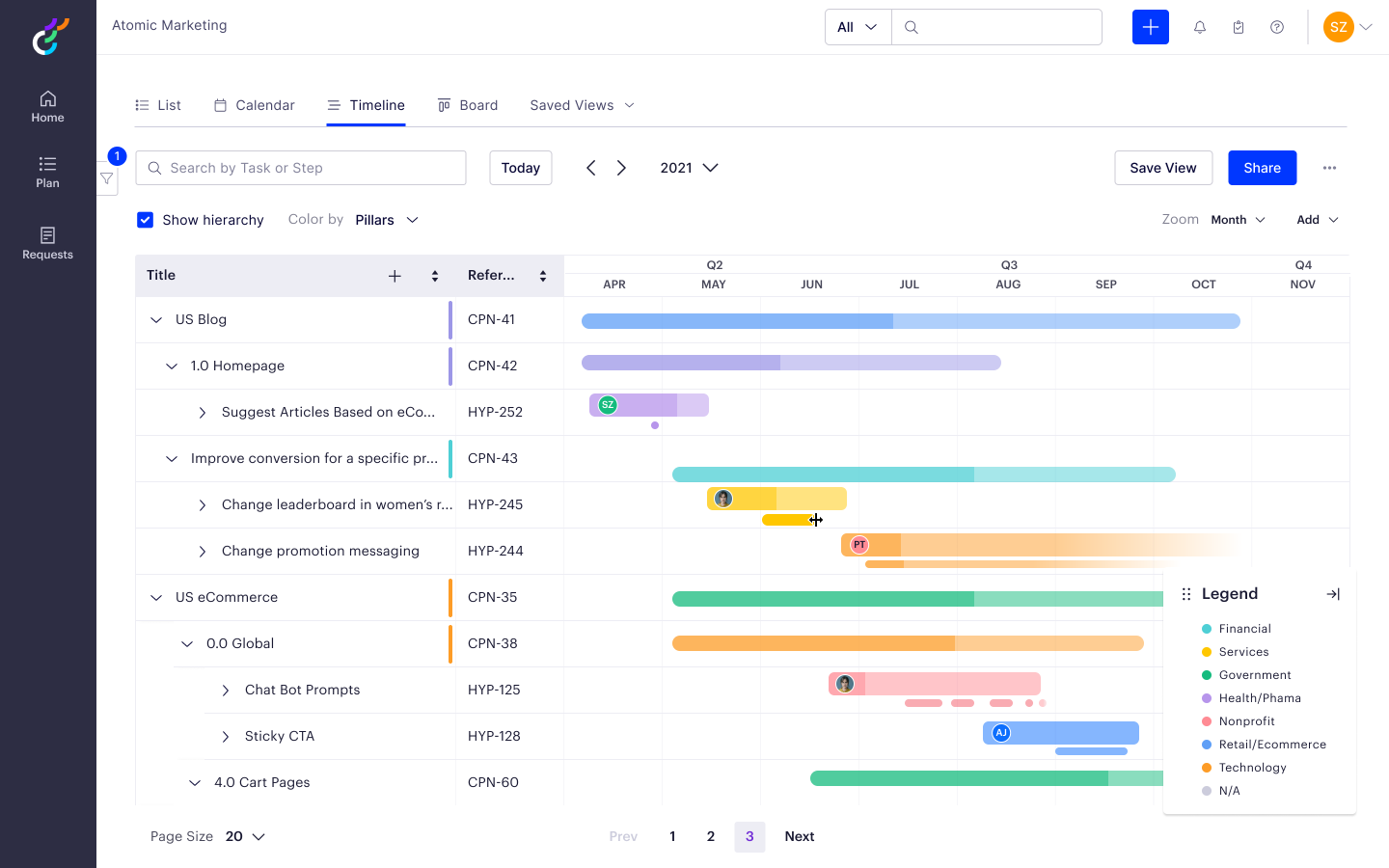Director of Product Analytics
EXPERIMENT COLLABORATION
Get more out of your day with a purpose-built collaboration tool for experimentation and personalization
Save time, provide visibility into plans, and increase velocity so you can make a bigger impact with less effort. Use a centralized hub to align processes and keep everyone together through the planning and execution phases of campaigns, experiments, and personalizations.

Increase your velocity
Test and personalize faster by giving
people the control and governance they
need to be confident and self-sufficient.
Optimize at scale
As your programs grow, maintain high-quality
processes and outcomes via workflows and
by providing everyone a framework to follow.
Make a wider impact
Get more out the door and ensure that the right
people take notice! Provide visibility into marketing
programs across campaigns, tests, and personalizations.
Capture great ideas. From everyone.
A structured intake process helps capture ideas, manage backlog of new optimization opportunities, and prioritize those that can truly make an impact.
- Customizable idea request forms and templates
- Routing rules to automatically get Requests to specific people or teams
- Turn a Request into a Hypothesis, where collaboration can begin
Work together. In one place.
Once a Hypothesis is created, use the workspace as a home for briefs,
variation designs, comment threads, and workflow assignments.
- Customizable workflow templates - assign people and set due dates
- @-mention and flexible notifications for tracking details
- Threaded comments keep conversation history in a single place
Proof and approve variation designs.
Collaborate on design variations, maintain version history, and track approvals all within the Hypothesis object but let designers stay in their design tool of choice.
- Design proofing (bring in M365, Adobe, Figma, or InVision files)
- Comments and annotations for images or live web pages
- Side-by-side version comparison to visualize differences
See and share the whole plan.
Orchestrate your entire program from a single view. Group in-flight optimizations
by sprints or kanban, however your team chooses to work. Keep leadership in
the loop with clean, informative layouts like a calendar or a list.
- Track status and sort by custom tags & labels to easily stay updated
- Share sleek views in board, timeline, list and calendar formats
- Invite unlimited guests, who can only see what's shared with them
- Socialize your outcomes to build a more engaged community
Director of Experimentation
Chief Revenue Officer
